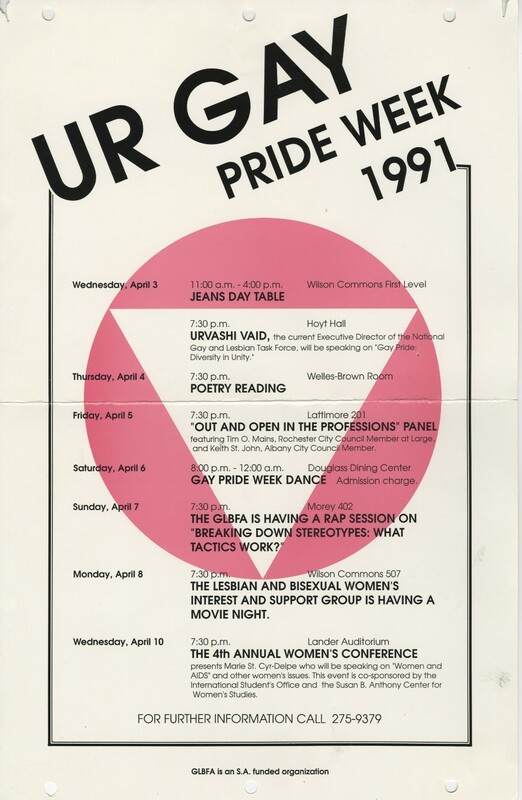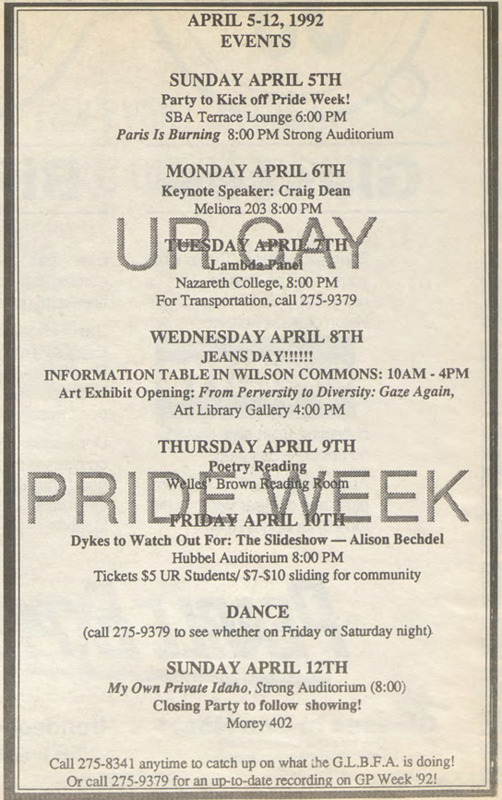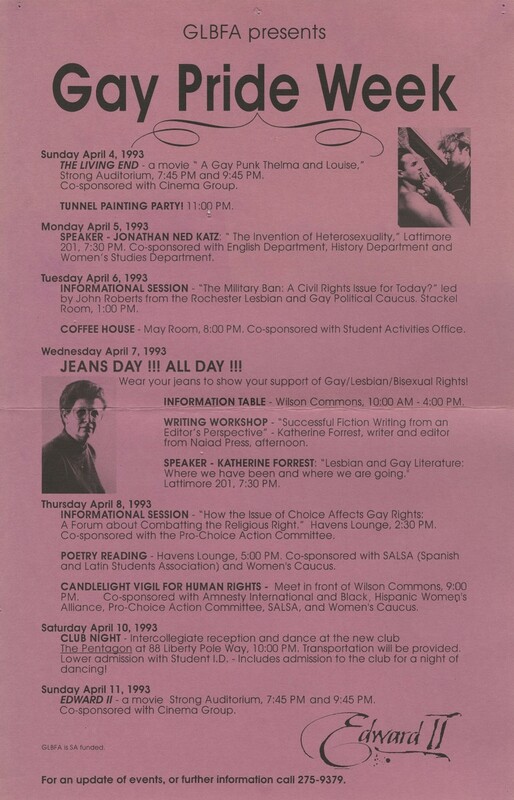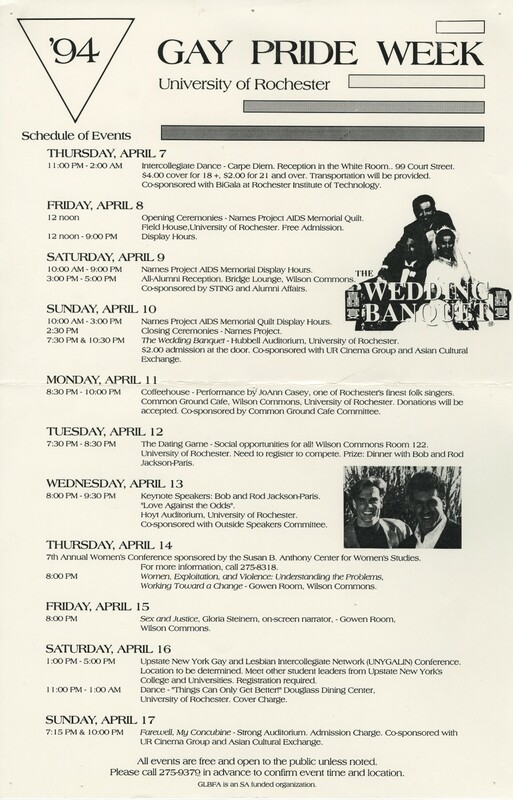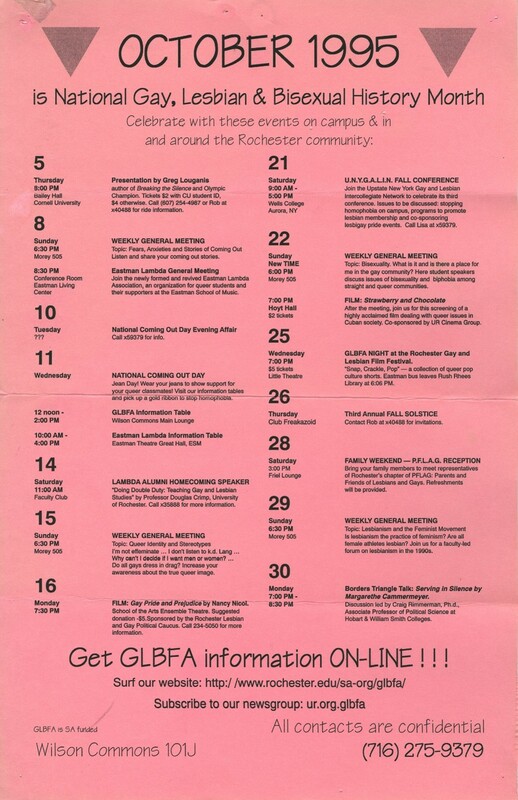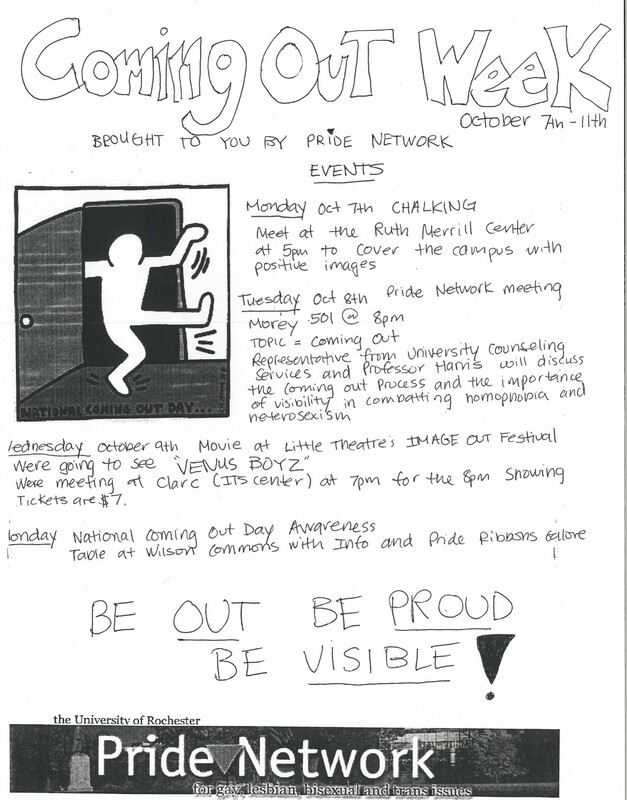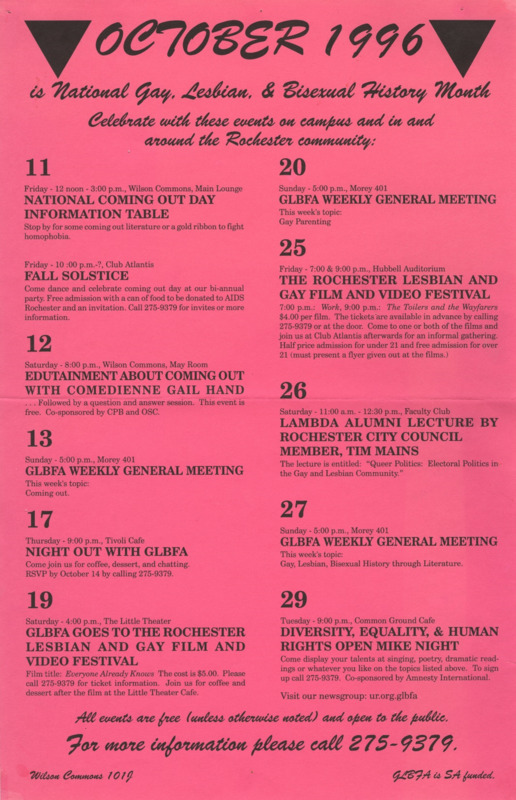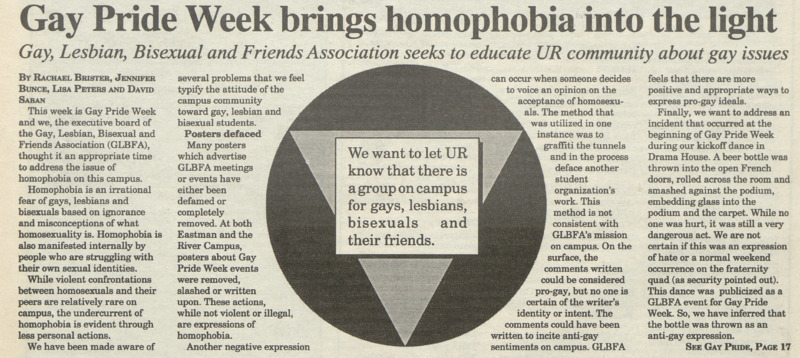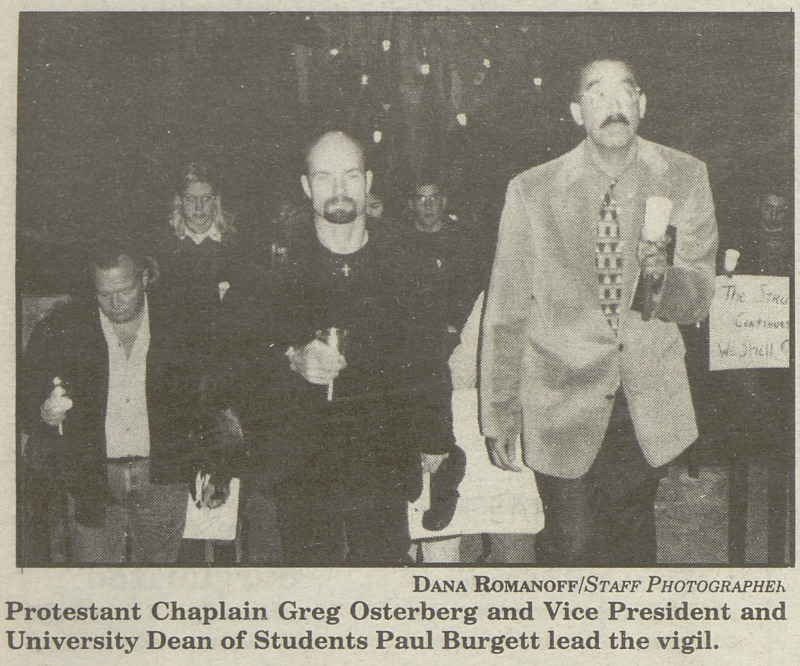1990s
Gay Pride Week
The 1990s saw a new wave of pride. While the traditional pride month falls in June to commemorate Stonewall or in the case of Rochester - July. This wouldn’t work for the campus group due to the confines of the academic year. To instate a time to proclaim gay pride and visibility, there started a tradition of Gay Pride Week celebrated in April. This was the big spring semester festivities for the GLBFA, a time to bring in speakers and host bigger events. Starting in 1990, the Gay, Lesbian, Bisexual, and Friends Association would sponsor a week of prideful activities each year to foster a supportive atmosphere on campus. Over the years of April pride activities, the Day of Silence was an important moment to highlight the issues faced by gay people across the world. Silence and isolation can be detrimental to anyone, even worse when added to a culture of shame associated with sexuality. Campus involvement in the day of silence, led by members of the GLBFA, was a stance of solidarity to stay silent in honor of those who have no choice. [31] Another common celebration was Jeans Day, calling campus members to wear jeans in support of Gay, Lesbian, and Bisexual rights. The range of events held each year would include diverse activities to increase awareness and acceptance of the gay community. The posters in the University Archive collection are extensive, showing the many events featured in these Pride Week celebrations. More event posters can be found in the gallery section.
Gay/Lesbian History Month
An equivalent time of important visibility in the fall semester was the celebration of gay history month in October. By 1995 it was an annual celebration with a month full of events dedicated to education and entertainment dealing with LGBT history. In October, National Coming Out Day was similarly important to the Day of Silence. Rather than staying silent, this day invited people to come out of the closet and find pride in their identities. The tradition of celebrating National Coming Out Day originated in the late 1980s and continues to this day.[32] A popular image for Coming Out Day, which is nationally celebrated, is a Keith Haring piece made for the day. Below (middle) is a poster made by the GLBFA using Haring’s piece in the early 2000s. The purpose of celebrating a gay history month was to highlight the often overshadowed, censored, and silenced histories. Events would educate the campus community of the rich precedent of queerness throughout history. This effort remains a necessary endeavor today, with LGBTQ+ history needing to be preserved to pass on the lives and achievements of those who came before us. History, in this sense, becomes a practice which must be continued to assure that our stories are remembered.
UR Drag
Another tradition that began in this decade was the annual drag show. Drag, a popular performance art with roots in the LGBT community was prevalent in the Rochester area.[33] The UR Drag show was held at least once an academic year, sometimes more, starting in February of 1997. Before that, Rochester drag culture was introduced to the campus by a student who performed locally as a drag queen under the name Aurora Borealis.[34] The annual drag show would host local Rochester drag queens to perform at the University of Rochester. Some of the recurring drag performers were Aggy Doon, Naomi Kane, Pandora Boxx, and Darienne Lake. Some of these performers would go on to perform on popular television show RuPaul’s Drag Race. They were all important figures in the Rochester drag community and these annual drag shows at the university brought their influence to the campus community.
Vandalism
These event-filled months and traditions fueled awareness and visibility for the gay group on campus. However, the attention wasn’t always positive. This can be seen in the gay pride week posters, some of which are missing from the RBSCP collection. While the missing posters could be unrelated, a 1995 article offers another explanation. The lack of posters could be due to the very common occurrence of vandalism and tearing down of gay pride posters. Vandalism and the destruction of gay group advertisements were continuous problems for the GLBFA students. It was such an issue that by 2000 it was necessary to intentionally increase the advertising budget, building in the cost of printing double the amount of posters knowing that many would initially be torn down and need to be replaced.
Matthew Sheppard
Nearing the end of the millennium, consciousness about gay-related hate crimes exploded into the mainstream. The news of Matthew Sheppard's death swept grief and anger across the nation. While it was a particularly gruesome hate crime that became sensationalized, it was in no way an uncommon occurrence for LGBTQ+ people to be brutally attacked or killed. This brought University of Rochester students to speak out against hate crimes in a vigil honoring Matthew Sheppard and others who held similar fates. Vice President and Dean of Students Paul Burgett stood among the mourning crowd, satisfied with the turnout for such an important event. The vigil represented solidarity for the gay community with the people of the university coming together to mourn the recent tragedy. The following discussion was a step towards education and awareness which is vital in overcoming the widespread hate. In this time of national fear and anger, the university community came together to better itself moving forward.


